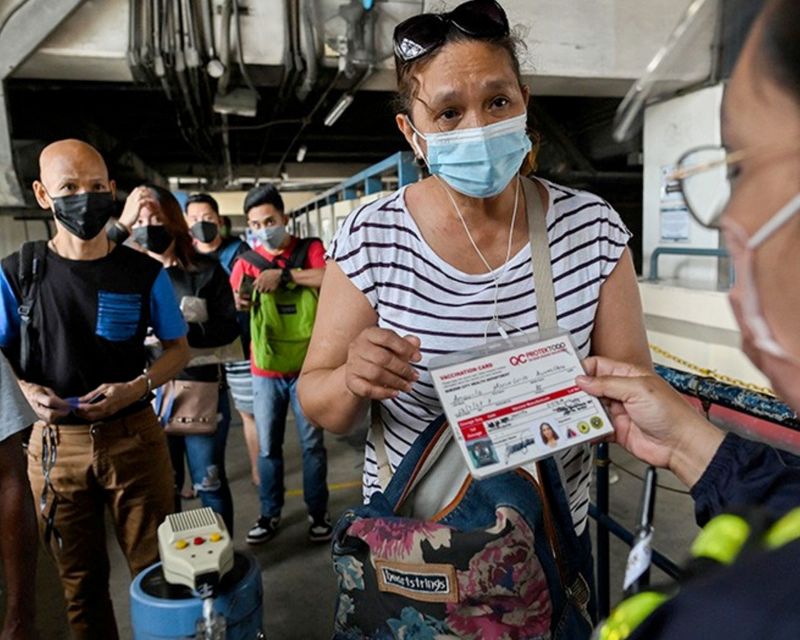
As COVID cases drop globally, Omicron sub-variant BA.2 spreads rapidly: WHO
HIGHLIGHTS
- Researchers tracking COVID-19 rushing to understand why the ‘son of Omicron’ (BA.2) is displacing its sibling (BA.1).
- A Japanese research team posted a pre-print on February 16, 2022 showing BA.2 may be capable of causing serious illness as other variants of COVID-19, including Delta.
- BA.2 also showed resistance to some treatments, including Sotrovimab, a monoclonal antibody therapy against COVID.
- A booster shot raises efficacy against BA.2 to about 74%.
THE World Health Organisation (WHO) has released a new report on Omicron sub-variant BA.2 — the so-called ‘son of Omicron’. It shows that in the first week of February, the strain accounted for 21.5% of all new Omicron cases analysed worldwide.
The means the sub-variant BA.2 accounts for roughly 1 in 5 new cases sequenced globally.
And in the last 30 days, Omicron (as a group of variants) took the lion’s share of the new cases identified globally (98.3%) based on genomic sequencing of PCR test samples submitted to the GISAID data-sharing hub.
What it also means: BA.2 is spreading rapidly, with effects yet unclear.
What we know so far:
Does the ‘son of Omicron’ cause worse outcomes than the original BA.1 strain?
Researchers from South Africa’s National Institute for Communicable Diseases (NICD) said patients infected with the new sub-variant suffered from “similar rates” of severe disease and hospitalisation as those with the original Omicron strain. Their findings came from data analysis from a large hospital group and the government laboratory service.
A new study conducted by a team in Japan, however, shows BA.2 does not only possess higher transmissibility — it may also cause more severe disease, able to escape treatments against COVID, a study posted on February 16, 2022 stated.
The Japanese research team found that BA.2 may be capable of causing serious illness as other variants of COVID-19, including Delta, and appears to largely escape vaccine-driven immunity. A booster shot raises efficacy to about 74% — making illness after infection less likely, it showed. The Japanese team stated BA.2 also shows “resistance to some treatments”, including Sotrovimab, a monoclonal antibody therapy used against COVID.
The findings are still preliminary, subject to peer review, and was posted Wednesday as a preprint on the bioRxiv server.
Monoclonal antibodies Sotrovimab and Evusheld lose activity against new Omicron variant BA.2. The country needs to make major effort to insure supply of convalescent plasma for immunosuppressed patients – current supply of high titer units inadequate.
Why is the Omicron sub-variant spreading faster than the original?
There are number of possible reasons. Clinical researchers are still collecting clinical data to better understand why the “son of Omicron” is displacing its sibling in countries around the world.
One reason is its higher rate of transmissibility. A study shows BA.2 is about 30% more transmissible than the original Omicron (BA.1), according to the World Health Organisation (WHO) experts.
The WHO was among the first institutions to raise concern over the new strain. Its experts created a chart outlining its current thinking about the sub-variant. It shows one of BA.2’s real divergences from other variants is its higher transmissibility.60 COUNTRIESThe Omicron subvariant BA.2 has now been detected in about 60 countries — gaining dominance in at least 10.
South Africa’s NICD report found that “BA.2 may be approx. 30% more transmissible than BA.1 (the original Omicron). The report states: “Consequently, this quick increase in BA.2 may lead to a steeper epidemic curve with a higher peak — and may postpone the time at which infection rates decline.”
A study published February 9, 2022 on a preprint biology server led by virologist David Ho at Columbia University in New York, noted that BA.2 and BA.1 had similar abilities to resist neutralising antibodies in blood samples of people who had been vaccinated or previously infected.

Does vaccination affect the transmission of the Omicron BA.1 and BA.2?
At this point, the WHO said it remains unclear. “The difference in growth potential between countries may be linked to differences in vaccination coverage and contact patterns arising because of restrictions, population densities, etc.,” the WHO report suggests.
Still, there’s no clarity yet as to whether the rate of vaccination being a key factor. One report quotes researchers in Israel having identified a handful of cases in which people who had recovered from BA.1 became infected with BA.2.
BA.2’s distinct viral properties could be another factor. The Danish study of Omicron spread in more than 8,000 Danish households suggests that BA.2’s rise is due to a number of factors.
Danish researchers have begun a study to determine how frequently such reinfections occur. So far, they found that the unvaccinated, double-vaccinated and boosted individuals, were all more susceptible to BA.2 infection than to BA.1 infection.
The fact that unvaccinated people are also at heightened risk of infection by BA.2 suggests that properties of the virus other than “immune evasion” are at least partly behind its enhanced transmissibility. On Wednesday (February 16, 2022), the journal Nature cited early studies which point to the fact that the BA.2 lineage might prolong the Omicron wave — but won’t necessarily cause a fresh surge of COVID infections.’SLY OMICRON’: BA.2 IN 10 NATIONS▶ BA.2 — also referred to as “Sly Omicron” — as of Monday (February 14, 2022), makes up a large portion of new cases reported in 10 nations: Denmark, India, China, Bangladesh, Brunei Darussalam, Guam, Montenegro, Nepal, Pakistan, and the Philippines.
▶ Latest data show that its frequency varies greatly throughout the globe, with South-east Asian countries showing the highest occurrence of BA.2 among Omicron variants (44.7%) and the Region of the Americas recording the lowest number (1%) so far.
▶ From January 29, 2022, to February 5, 2022, BA.2 nearly tripled in frequency from 1.2% to 3.6%, even though a tiny percentage of patients were sick because of it.
▶The new Omicron strain’s prevalence grew from 27% on February 4 to 86% on February 11 in South Africa.
▶ From January 17 to January 31, it rose six-fold — from 2.2 percent to 12 percent in the UK. Throughout the last week of 2021 to mid-January 2022, Denmark’s BA.2 numbers more than doubled — from 20% to 45%. Towards the third week of January, it became a more frequent variant within Denmark, responsible for 66% of samples tested.
▶ According to experts, the BA.2 sub-variants spread is so successful that a report released late January by the Statens Serum Institut (under the auspices of the Dutch Ministry of Health) concluded that by mid-February 2022, “almost 100% of all infections” may be BA.2.
Where is BA.2 spreading rapidly?
The BA.2 variant is reportedly spreading rapidly in countries including Denmark, the Philippines and South Africa in the past few weeks.
However, the WHO cautions that the reported global case numbers might not reflect the true spread of the virus because of a decline in testing.
What are the factors explaining its rapid spread?
Experts are currently looking different variables, including population density and vaccination rate. Based on Johns Hopkins University data, Denmark is highly vaccinated — with a rate of over 80% jab rate — and is also highly concentrated. Denmark recently opened the country, dropping nearly all of its restrictions, including pre-departure PCR test for inbound travellers.
On the other hand, the US is less concentrated than Denmark, though only 65% percent of its citizens are vaccinated. One thing is clear: Cases are down in all three countries — Denmark, South Africa and the US — despite the growth of BA.2.
The WHO noted, however, that the number of tests has declined, which could affect data analysis. Test positivity rate in the three countries is mixed. Denmark moved up to at 35% the last week of January; the US fell to 8.7% in the second week of February; South Africa trending down to 11.3% in the first week of February.
So far, the only explanation for the new sub-variant’s rapid rise is its being more transmissible than BA1. Other studies suggest BA.2 can readily overcome immunity from vaccination and previous infection with earlier variants — though it’s no better than BA.1 in demonstrating “immune escape” capabilities.
Will BA.2 trigger a second major wave of Omicron infections?
Some scientists said this is unlikely. If initial findings are bolstered by subsequent real-world studies, scientists think that BA.2 is NOT likely to spark a “second major wave” of infections and hospitalisations after Omicron’s initial onslaught.
Dan Barouch, an immunologist and virologist at Beth Israel Deaconess Medical Center in Boston, Massachusetts, said: “It might prolong the Omicron surge. But our data would suggest that it would not lead to a brand-new additional surge.”
Barouche led the study of BA.2, and posted their pre-print study on the medRxiv biology server on February 7, 2022.Findings from South African study, based on data from nearly 100,000 people.


